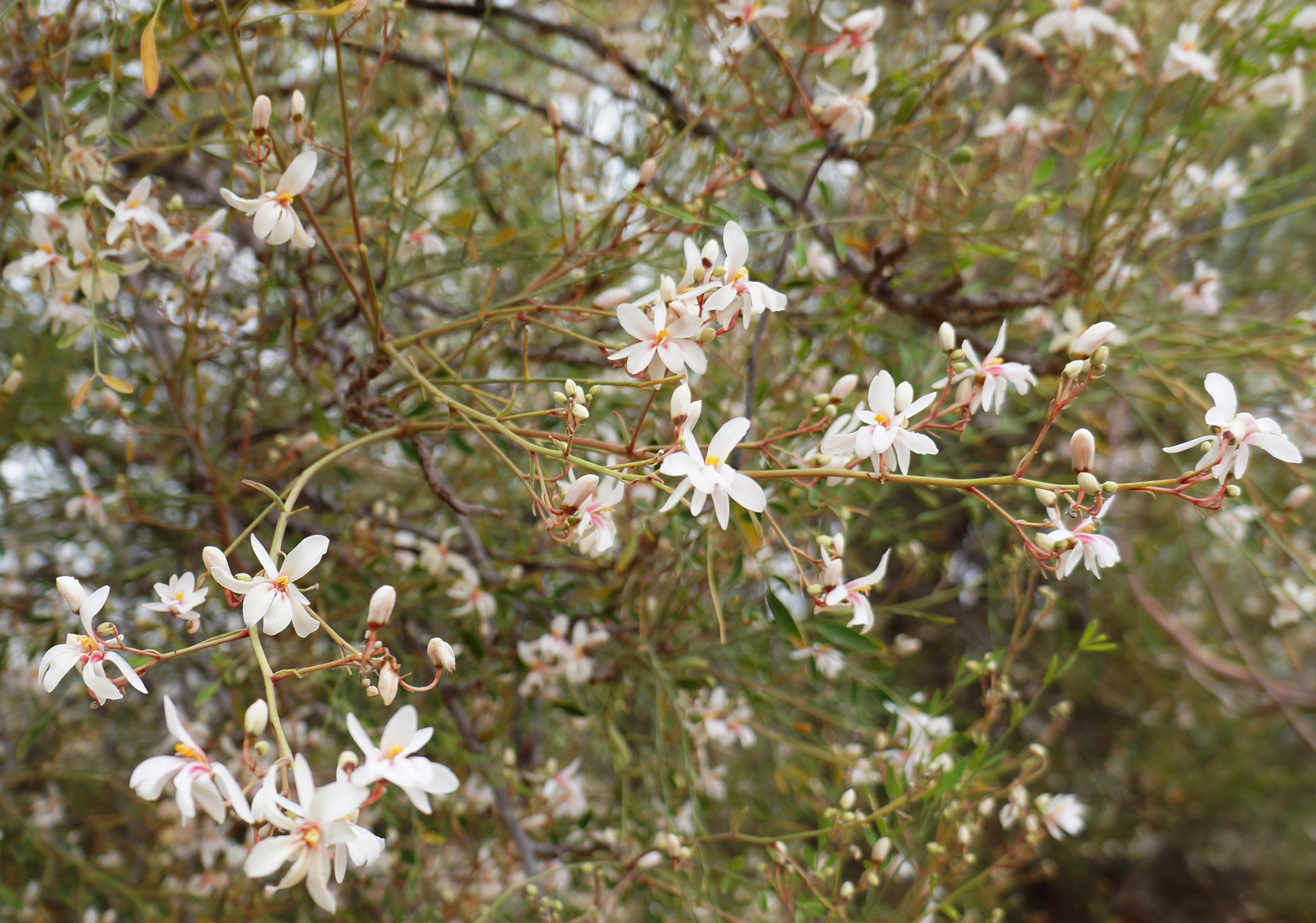Moringa peregrina
(Moringa peregrina)

Description
Moringa peregrina is a species of flowering plant in the family Moringaceae that is native to Arabian Peninsula Horn of Africa and Southern Sinai, Egypt and can be found throughout Arabia, Egypt and as far north as Syria. Moringa peregrina grows on rocky wadis and on cliffs in drier areas. Moringa peregrina is a deciduous tree, 6-10m tall, with large leaves and thin pendulous branches. The tree blossoms twice a year; once in the Spring and in Autumn. Its flowers are five petaled, white or streaked red or pink. Its fruits are distinctive and can be seen hanging from its branches throughout the year. The fruits are narrowly cylindrical, up to 30 cm long and marked with deep longitudinal grooves. When ripe they split into three valves shedding the large whitish seed, known as the behen-nut. The seed contains a fragranced light oil, made of an excellent nature, as it does not grow rancid. In the Middle-Ages, it was used as a base oil for certain perfumes. In Israel, the tree is protected by law and grows along rugged, desert rock-faces and canyons along the Dead Sea, especially where there are watercourses, such as in Ein Gedi and in Naḥal Gob (near the lower Naḥal Sīn), as well as near the springs of al-Ḥama at the entrance to Wadi Qelt. Moringa peregrina were used for home construction and fires, and its leaves consumed as food and livestock feed. In eastern Oman, young Moringa peregrina saplings would be dug up and its roots slowly roasted in a fire for food. In Oman, oil extracted from pods was used in traditional medicine and in perfumery. Bedouins in Egypt would supply the Cairo market with behen-nut seeds, from which a fine, lubricant oil was extracted for use in mechanical watches.The manner in which the Bedouins extracted the oil from the behen-nut for their own personal use in cooking was marked with superstitious practices. After collecting the seeds from the pods, they would boil the seeds in water, and when the oil surfaced, it was skimmed off. The fire that they used for this process was made from yasaar wood (Moringa peregrina) only. The person or persons doing the extracting were always alone, as they believed that if they were being watched, the yield obtained from the seeds would be far less, or none at all.
Taxonomic tree:







